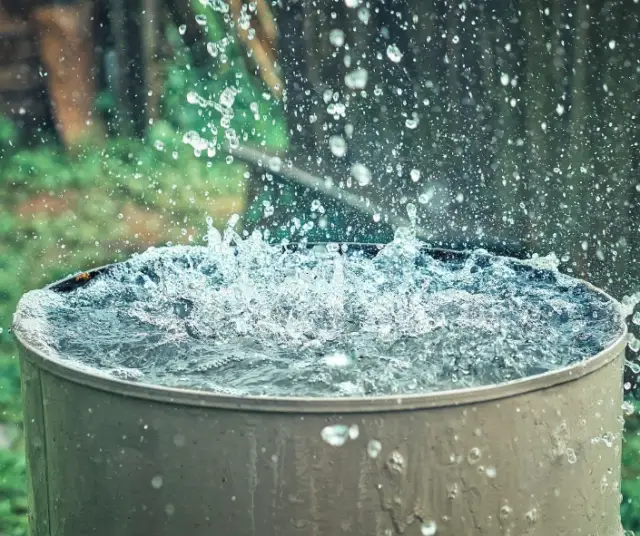Water is one of our planet's most valuable resources, and its conservation has become an increasingly important concern around the world. One of the most effective ways to preserve this vital resource is to harness rainwater. Rainwater is a free, natural source of water that can be used in a variety of domestic, industrial and agricultural applications.
Benefits of Using Rainwater
Before delving into methods for collecting and using rainwater, it is important to understand the benefits that this practice can bring both to the individual and to society in general. Here are some key reasons to consider collecting and using rainwater:
Conservation of drinking water
One of the most obvious benefits of using rainwater is that it reduces the demand for drinking water. Drinking water is a limited and valuable resource that should not be wasted on non-potable applications, such as watering the garden or washing the car. By using rainwater for these tasks, the supply of drinking water for human consumption and other critical needs is conserved.
Costs reduction
Collecting and using rainwater can result in significant savings over time. By reducing reliance on municipal or well water supplies, homeowners and businesses can see their water bills decrease. Additionally, the initial investment in a rainwater harvesting system can pay for itself over time through these savings.
Environmental sustainability
Rainwater harvesting is a sustainable practice that helps conserve water resources and reduce the environmental footprint. By taking advantage of a natural and renewable water source, the need to build new infrastructure for water supply, such as reservoirs or treatment stations, is reduced.
Flood reduction
Rainwater harvesting can also contribute to local flooding reduction. When rainwater accumulates on roofs, yards, and streets, it can cause flooding in urban areas. By collecting and redirecting rainwater into appropriate storage systems, the risk of flooding can be reduced and water management in urban areas improved.
Improved soil quality
Rainwater is naturally low in salts and minerals, making it ideal for watering plants and gardens. By using rainwater instead of tap water, you prevent salt buildup in the soil, which can improve plant health and soil quality in the long term.
Methods to Collect Rainwater
Now that we have explored the benefits of using rainwater, it is time to examine the methods available to collect it effectively. Choosing the right method will depend on your specific needs and the space available on your property. Here are some common methods for collecting rainwater:
1. Roofs and gutters
One of the simplest and most effective methods of collecting rainwater is through building roofs and gutters. When it rains, water flows from the roof into the gutters and then is directed through pipes to a storage system, such as a rainwater tank. Metal roofs, shingles, and other waterproof materials are ideal for this technique.
2. Rainwater tanks
Rainwater tanks are containers specifically designed to store water collected from rain. They come in a variety of sizes and materials, such as plastic, fiberglass, or metal. These tanks can be installed on the ground or on top of buildings, depending on space availability. It is important to ensure that the tank is properly sealed to prevent contamination and mosquito breeding.
3. Rainwater collection systems
Rainwater harvesting systems are a more advanced option that can be used to collect and store large amounts of rainwater. These systems can include gutters and advanced filters to ensure that the collected water is clean and ready for use in domestic or industrial applications. They may also include pumping systems to distribute water throughout a property.
4. Rainwater collection barrels
For those with limited space or tight budgets, rainwater collection barrels are an economical and practical option. These barrels are placed under the gutters to capture water flowing from the roof. They come in different sizes and styles, and can be an effective solution for watering small gardens and orchards.
5. Swales and ditches
In rural settings or areas with natural slopes, swales and ditches can be created to direct rainwater toward natural retention areas, such as ponds or reservoirs. These landscape features can help recharge underground aquifers and provide habitats for local wildlife.
Tips to Optimize the Use of Rainwater
Once you've implemented a rainwater harvesting system, here are some handy tips to ensure you're making the most of this valuable water source:
Install filters and diverters
To ensure that the water collected is clean and free of contaminants, it is important to install filters in the collection system. Diverters can also be useful in preventing the first few minutes of rain, which may contain contaminants from the roof, from entering the storage system.
Keep the system clean
Perform regular maintenance of the collection system to prevent the buildup of leaves, dirt and other debris in gutters and pipes. A clean system will run more efficiently and provide better quality water.
Use water wisely
Prioritize the use of rainwater in applications that do not require potable water, such as watering the garden, filling the pool, or washing the car. Use rainwater consciously and avoid wasting it.
Check local regulations
Before installing a rainwater collection system, check local regulations and obtain necessary permits if necessary. Some areas may have specific restrictions or regulations for rainwater harvesting.
Education and awareness
Promote education and awareness about the importance of collecting and using rainwater among your neighbors, friends and family. The more people who participate in this practice, the greater the benefits to the community and the environment.
Collecting and using rainwater is an effective and sustainable way to conserve drinking water, reduce costs and mitigate environmental impact. The benefits of this practice are numerous and range from resource conservation to local flooding reduction. By using proper methods and following practical advice, anyone can make the most of this valuable source of water. As awareness of the importance of water conservation continues to grow, rainwater harvesting becomes a significant contribution towards a more sustainable and environmentally friendly future.
